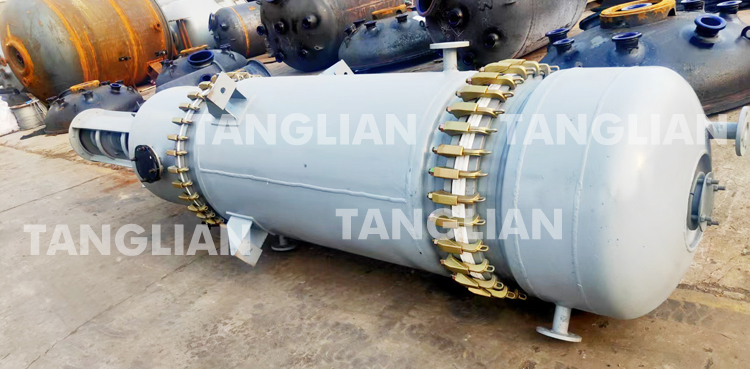News
Common Corrosion Problems with Thin Film Evaporators
Film evaporator is one of the many types of evaporators used for rough distillation. The scraper-type thin film evaporator is a highly efficient evaporation and distillation equipment that evaporates or distills liquid by using a scraper to distribute the liquid into a homogeneous thin film, which can be deodorised, defoamed, heated or cooled down, and so on. The scraper film evaporator includes an evaporation cylinder, a heating chamber is provided between the inner and outer walls of the cylinder, and a scraper assembly is provided inside the evaporation cylinder. When in use, the material liquid is added from the upper part of the evaporation cylinder in a tangential direction, and due to gravity, centrifugal force and the action of the rotating scraper, the liquid forms a downwardly rotating thin film inside the evaporator, and heat-conducting oil is passed into the heating cavity for heating the cavity.
In many production processes, due to the use or generation of acid, alkali, salt, produced by the neutralisation of wastewater containing high salt after the biochemical treatment of bad effects. For salt-containing wastewater more evaporator for its evaporation and crystallisation.
Thin film evaporator common corrosion problems:
1. metal corrosion: evaporator common medium for sodium chloride, ammonium chloride, sodium sulfate, ammonium sulfate, sodium hydroxide, hydrochloric acid, sulfuric acid, etc., thin film evaporator is generally made of stainless steel 2205, 316L, 304 and other metal materials, can not avoid metal corrosion, metal corrosion refers to the metal material by the role of the surrounding media and damage, commonly chemical corrosion and electrochemical corrosion.
2. Temperature corrosion: every 10 ℃ rise in temperature, the corrosion rate increases about 1-3 times.
3. pH corrosion: generally the smaller the PH value, the greater the metal corrosion.
4. Pneumatic corrosion phenomenon: fluid in high-speed flow and pressure changes in the conditions, the metal surface in contact with the fluid occurs similar to the phenomenon of cave-like corrosion damage.
5. High-temperature steam corrosion: high-temperature steam corrosion of the substrate of many factors, oxygen corrosion, pH, chloride ions, dissolved oxygen concentration, water flow rate, temperature and so on. High-temperature steam condensate contain impurities, especially industrial steam contains a lot of gas impurities, in the process of steam condensation dissolved in the condensate, while in the process of condensate transport will also dissolve a certain amount of gas.
6. Abrasion: scraper in the process of mixing materials, liquid carried in the crystal on the equipment for abrasion and etching.

Categories
News
Contact Us
E-mail: service@chinareactor.com
Add: Hongshan Town Industrial Park, Chongzheng Road, Zichuan District, Zibo City, Shandong Province